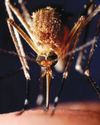
Nestled in the southern reaches of Chilean Patagonia, Torres del Paine National Park may be famous for its windswept granite peaks and impossibly turquoise lakes, but in recent years it’s also become known as one of the best places in the world to encounter pumas. Thanks to two decades of concerted conservation efforts, some 60 individuals now inhabit the park and surrounding private areas, sustained by an ample population of guanacos. In August 2019, photojournalist Lucas Bustamante spent a week amid the ice and snow of this iconic landscape, getting to know a hard-working female and her four six-month-old cubs.
Like most cats, female pumas raise their young alone after mating in the spring. Litters usually number two (though can comprise up to six), so this was a healthy brood. The female was a very attentive parent, regularly grooming her youngsters and ever-watchful for danger. It pays for mother pumas to invest in their cubs – females typically average just one litter every two to three years.
A guanaco’s curiosity almost gets the better of it, as it wanders nerve-janglingly close to the family hideout. When out hunting, the female often stashed her cubs in rocky nooks across her territory, to ensure shelter not only from the bitter Patagonian wind, but also from large males, who would kill the youngsters in a heartbeat to bring the female back into season.
Bursting with energy, the cubs played virtually non-stop, constantly pestering their mother when she was trying to rest after a night’s hunting. “It was funny watching the female try to ‘escape’ her young so that she could get some sleep,” says Lucas. “Wherever she went, they would find her and try to rouse her to play. She had enormous tolerance for their antics.”
This story is from the May - June 2021 edition of BBC Earth.
Start your 7-day Magzter GOLD free trial to access thousands of curated premium stories, and 9,000+ magazines and newspapers.
Already a subscriber ? Sign In
This story is from the May - June 2021 edition of BBC Earth.
Start your 7-day Magzter GOLD free trial to access thousands of curated premium stories, and 9,000+ magazines and newspapers.
Already a subscriber? Sign In

World's First Malaria Vaccine
The World Health Organization’s director-general hails ‘historic moment’ as mass immunisation of African children begins

Is River Pollution Putting The Species In Jeopardy Again?
Ten years ago, it was jubilantly announced that o ers had returned to every county in England. But is river pollution putting the species in jeopardy again?

The Big Burnout
Long hours, low pay and a lack of appreciation — among other things — can make for a stressful workplace and lead to burnout. It’s something we should all be concerned about, because over half of the workforce reports feeling it

Putting Nature To Rights
More countries are enshrining the right to a clean environment into law. So if a company or government is impinging upon that right, you could take them to court

Mega Spaceship: Is It Possible For China To Build A Kilometre-Long Spacecraft?
Buoyed on by its successful Moon missions, China has launched a five-year study to investigate the possibility of building the biggest-ever spacecraft

Are We Getting Happier?
Enjoying more good days than bad? Feel like that bounce in your step’s getting bigger? HELEN RUSSELL looks into whether we’re all feeling more cheery…

“Unless the Japanese got the US off their backs in the Pacific, they believed they would face complete destruction”
Eighty years ago Japan’s surprise raid on Pearl Harbor forced the US offthe fence and into the Second World War. Ellie Cawthorne is making a new HistoryExtra podcast series about the attack, and she spoke to Christopher Harding about the long roots of Japan’s disastrous decision

Your Mysterious Brain
Science has mapped the surface of Mars and translated the code for life. By comparison, we know next to nothing about what’s between our ears. Over the next few pages, we ask leading scientists to answer some of the most important questions about our brains…

Why Do We Fall In Love?
Is it companionship, procreation or something more? DR ANNA MACHIN reveals what makes us so willing to become targets for Cupid’s arrow

Detecting the dead
Following personal tragedy, the creator of that most rational of literary figures, Sherlock Holmes, developed an obsession with spiritualism. Fiona Snailham and Anna Maria Barry explore the supernatural interests of Sir Arthur Conan Doyle